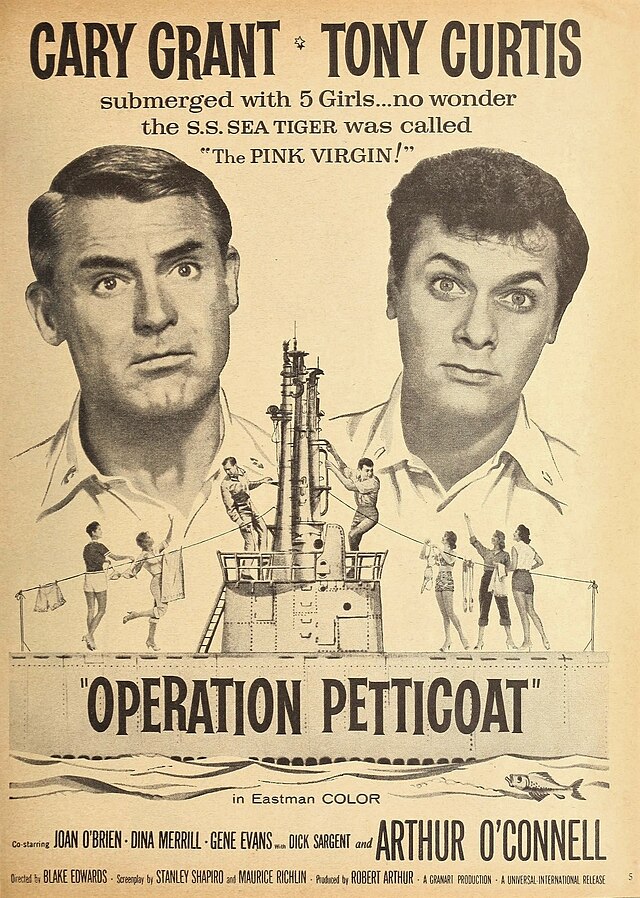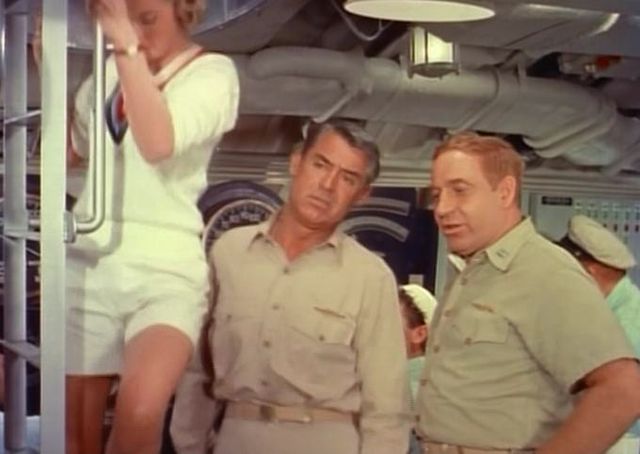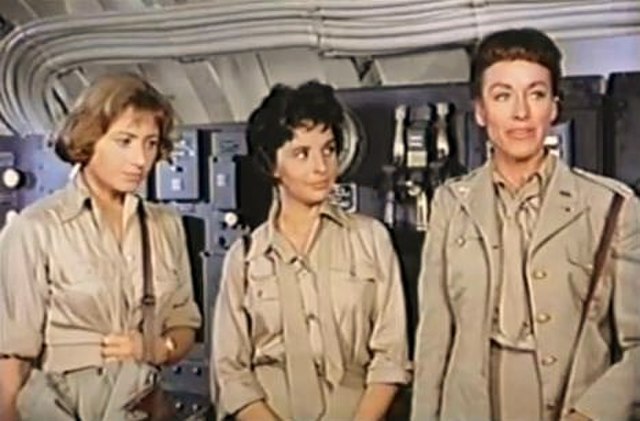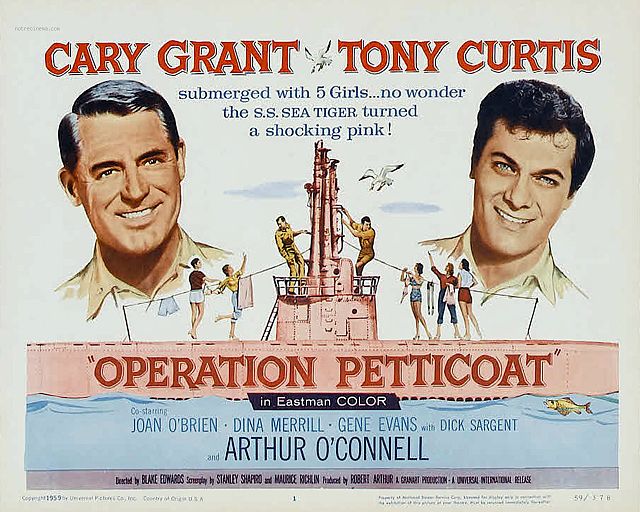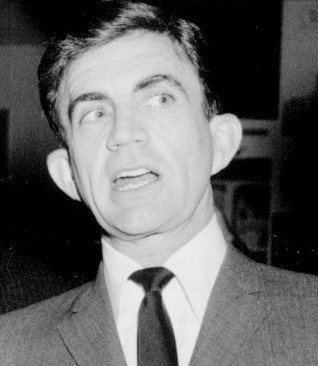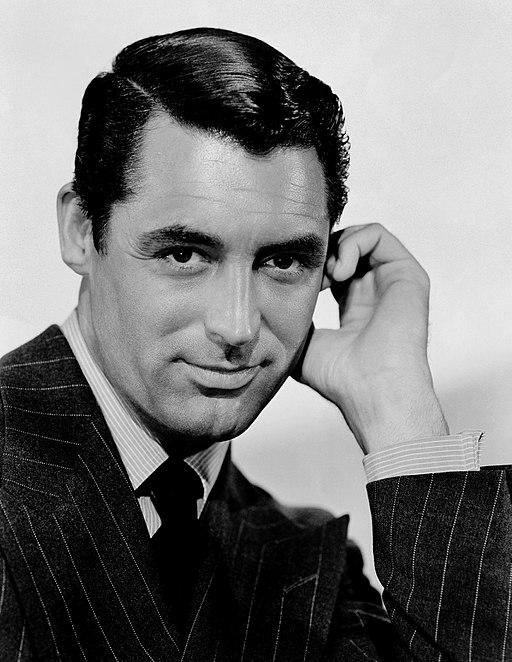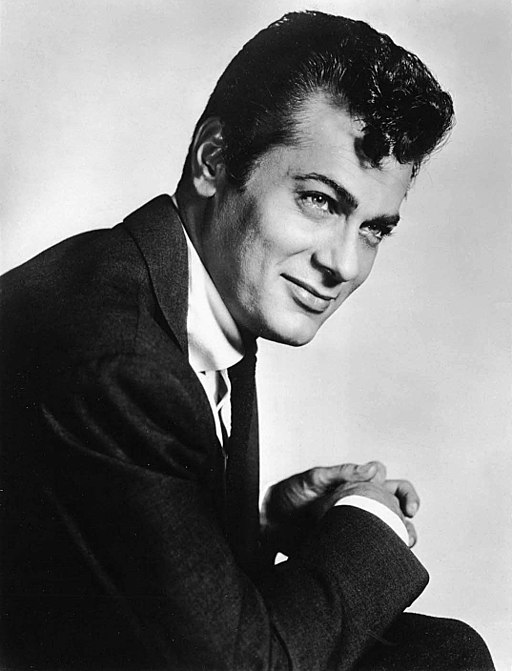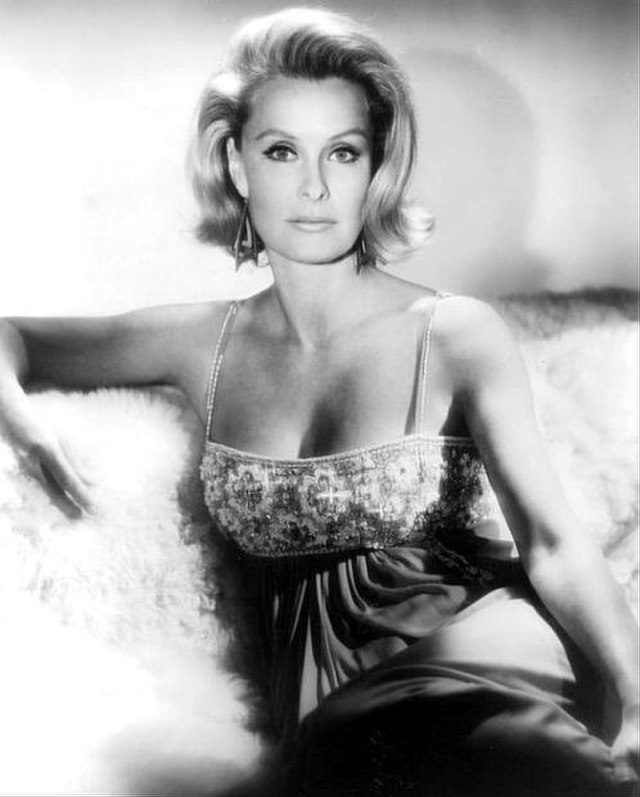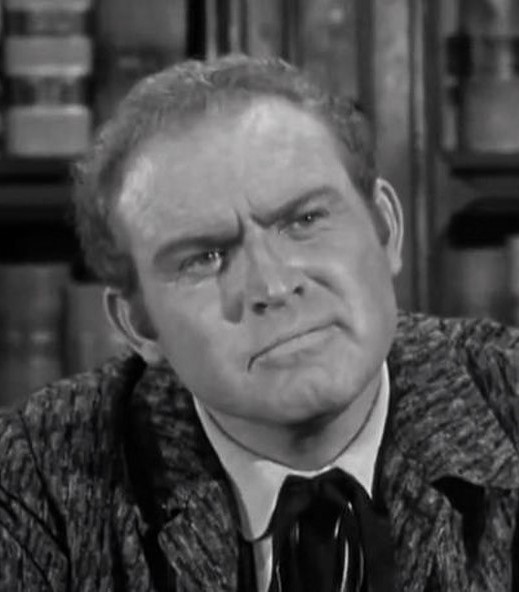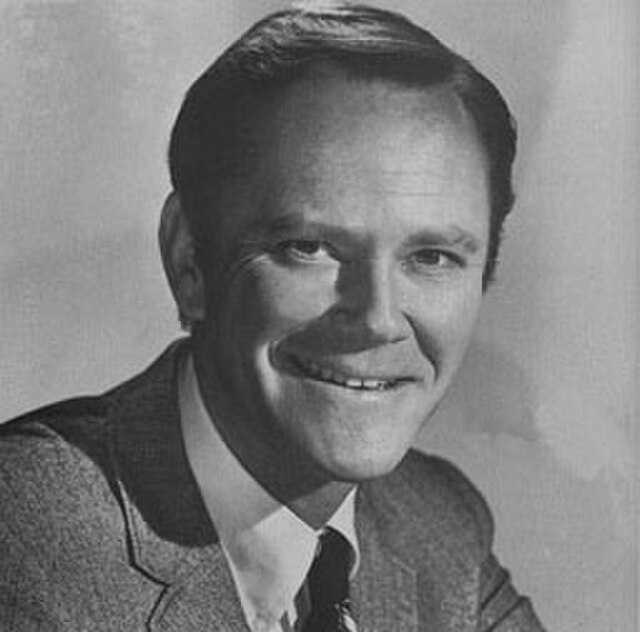Operation Petticoat - 1959
back| Released by | Universal International |
| Director | Blake Edwards |
| Producer | Robert Arthur |
| Script | Stanley Shapiro - Maurice Richlin |
| Cinematography | Russell Harlan |
| Music by | David Rose |
| Running time | 124 minutes |
| Film budget | $2.8 million |
| Box office sales | $9.3 million |
| Main cast | Cary Grant - Tony Curtis - Joan O'Brien - Dina Merrill - Gene Evans - Dick Sargent |
Operation Petticoat
A Charming Wartime Comedy
Operation Petticoat (1959), directed by Blake Edwards, is a World War II comedy about the misadventures of the USS Sea Tiger, a damaged submarine led by Lt. Cmdr. Matt Sherman (Cary Grant). With the help of the resourceful Lt. Nicholas Holden (Tony Curtis), the submarine is repaired but inadvertently painted pink, attracting attention as they evade enemies and navigate absurd situations, including taking on five female nurses.
The film was a major box-office success, blending comedy, wartime action, and romance in a lighthearted manner. Its mix of clever situational humor and charismatic performances by Grant and Curtis made it a beloved classic.
Related
Operation Petticoat – 1959
Summary
Operation Petticoat is a wartime comedy set during World War II, centered around the misadventures of the USS Sea Tiger, a U.S. Navy submarine. The film opens with Lt. Cmdr. Matt T. Sherman (played by Cary Grant) reflecting on his submarine’s journey and how it became a significant part of the war effort, despite its initially disastrous state. The story is largely told through flashbacks as Sherman recalls the early days of the Sea Tiger's chaotic voyage.
The movie begins with the Sea Tiger docked at a Philippine base, where it suffers major damage during a Japanese air raid. Sherman is determined to get the submarine back into action, but he lacks the proper equipment and crew. Enter Lt. Nicholas Holden (played by Tony Curtis), a suave and resourceful supply officer with no combat experience but a knack for getting things done through unorthodox means—mostly involving black-market deals, deception, and outright stealing.
With Holden’s help, Sherman manages to get the Sea Tiger seaworthy again, though far from ideal. As the submarine sets sail, it encounters an unexpected challenge: they must take on five stranded female nurses. This development adds another layer of complications, especially given the tight quarters on the submarine and the fact that the all-male crew is unused to sharing space with women.
The most notable comedic moment arises when, due to the lack of appropriate supplies, the submarine is accidentally painted pink. Despite Sherman’s protests, the Sea Tiger has no choice but to sail on, attracting attention not only from the enemy but also from their allies, who mistake them for a non-combatant ship due to their peculiar color.
Throughout their journey, the crew faces various comic situations, including attempts to evade the Japanese, Holden’s continued schemes to procure resources, and the growing romantic tension between the male crew and the female nurses. Lt. Holden, in particular, is romantically drawn to Lt. Dolores Crandall (Joan O’Brien), while Sherman shares a more restrained affection with Lt. Barbara Duran (Dina Merrill).
In the film’s climax, the Sea Tiger faces a series of close encounters with the enemy, but thanks to a combination of luck, Holden’s unconventional methods, and Sherman’s steady leadership, the submarine and its crew manage to survive and make it back to safety.
The flashback concludes, returning to the present, where Sherman, now older, is overseeing the decommissioning of the Sea Tiger. The film closes on a sentimental note, with Sherman reflecting on how a series of mishaps and unlikely events turned his submarine into a legend.
Analysis
Operation Petticoat blends elements of comedy, romance, and wartime drama, creating a unique and engaging story. The film’s humor derives primarily from the clashing personalities of the two leads: Cary Grant’s stoic, by-the-book Sherman and Tony Curtis’s charming, unscrupulous Holden. Grant’s understated performance as the frustrated commander provides a perfect counterbalance to Curtis’s fast-talking, resourceful character, leading to plenty of comedic tension as they navigate the absurdity of their situation.
One of the film’s strongest elements is its portrayal of the absurdity and unpredictability of wartime situations. Rather than focusing on traditional heroics, Operation Petticoat highlights the improvisational nature of military life, especially in moments of desperation. The fact that the crew is forced to paint their submarine pink due to a shortage of gray paint is a perfect example of how war can lead to humorous, sometimes surreal scenarios.
The addition of the female nurses to the story creates an interesting dynamic. In contrast to many war films of the era, which focused almost exclusively on male camaraderie and combat, Operation Petticoat explores the tension between men and women sharing close quarters in a military context. The interactions between the male crew and the nurses provide a lot of the film’s lighter, romantic comedy elements, while also poking fun at gender stereotypes of the time.
The film also subtly critiques the bureaucracy and red tape that often hampers military operations. Lt. Holden’s success in keeping the submarine afloat through dishonest means, while unorthodox, illustrates that rigid adherence to rules isn’t always practical in extreme circumstances. His character represents the idea that adaptability and resourcefulness can sometimes be more valuable in wartime than strict rule-following.
Blake Edwards’ direction is adept at balancing the film’s various tones, from light-hearted comedy to moments of genuine tension. The pacing is brisk, with the film rarely losing momentum as it moves from one comedic set-piece to the next. The cinematography by Russell Harlan and David Rose’s score complement the film’s playful atmosphere, keeping the mood light even in moments of danger.
Themes and Reception
One of the central themes of Operation Petticoat is adaptability in the face of chaos. Whether it's repairing a damaged submarine, dealing with an unexpected crew of female nurses, or finding creative ways to gather supplies, the characters are constantly forced to think outside the box to overcome the obstacles in front of them. This theme of improvisation resonates throughout the film and reflects the real-world challenges of war, where situations often do not go as planned.
Another theme is gender dynamics, as the male crew and female nurses must learn to work together in cramped, high-pressure situations. The film humorously navigates the social norms of the 1950s while still managing to highlight the essential contributions of both genders to the war effort.
Operation Petticoat was a commercial success, becoming one of Universal’s highest-grossing films at the time. Its blend of star power (with the iconic pairing of Grant and Curtis) and its accessible, light-hearted tone made it a hit with audiences. Though not groundbreaking in terms of story, it remains a classic example of how well-executed comedy, particularly in a wartime setting, can resonate with viewers.
Overall, Operation Petticoat is a charming and entertaining film that skillfully blends comedy and wartime adventure, thanks to strong performances from its lead actors and Blake Edwards’ deft direction. It remains a light-hearted, nostalgic look at the zaniness of military life, underlining the importance of ingenuity and teamwork in the face of adversity.
Trailer Operation Petticoat 1959
Full Cast
· Cary Grant as Lt. Cmdr. Matt T. Sherman
· Tony Curtis as Lt. Nicholas Holden
· Joan O'Brien as Lt. Dolores Crandall
· Dina Merrill as Lt. Barbara Duran
· Gene Evans as Chief Mechanic's Mate Sam Tostin
· Arthur O'Connell as Chief Mechanic's Mate Molumphry
· Dick Sargent as Ens. Stovall
· Virginia Gregg as Maj. Edna Heywood
· Robert Gist as Lt. Watson
· Gavin MacLeod as Ernest Hunkle (Yeoman)
· Madlyn Rhue as Lt. Reid
· Marion Ross as Lt. Colfax
· Clarence Lung as General Bruce
· Robert F. Simon as Captain J.B. Henderson
· George Dunn as Seaman Kraus
· Frankie Darro as Seaman Kleiner
Blake Edwards' Direction
Blake Edwards' direction in Operation Petticoat (1959) showcases his skill in blending various tones—comedy, adventure, and light romance—into a cohesive and entertaining narrative. Known for his deft handling of comedic timing and his ability to juggle multiple plot elements, Edwards demonstrates these talents throughout the film, making it a standout example of mid-century Hollywood comedic cinema.
Tone and Balance
One of Edwards' greatest strengths in Operation Petticoat is his ability to maintain a delicate balance between the film’s comedic aspects and its wartime backdrop. While the movie is fundamentally a comedy, the setting—a World War II submarine—introduces an element of danger that Edwards skillfully underplays, ensuring that the humor remains front and center. He injects moments of tension, such as the Sea Tiger narrowly evading enemy forces, but these are often diffused with quick-witted lines or absurd situations, such as the infamous pink submarine. This tonal balance allows the film to remain lighthearted without trivializing the war context.
Comedic Pacing and Timing
Edwards had a keen eye for physical and situational comedy, and Operation Petticoat is filled with humorous moments that arise naturally from the characters and their environment. The direction emphasizes the absurdity of the situations, particularly in how a seemingly serious war mission is continually derailed by comedic mishaps—from engine troubles to Holden’s schemes to procure supplies and the presence of the female nurses. The pacing is brisk, with each comedic set-piece carefully built up and executed with precision. Whether it's the chaos caused by having women on board a submarine or the crew's reaction to their vessel being painted pink, Edwards knows exactly how to stretch out the gag just enough without overdoing it.
Character-Driven Humor
Edwards’ direction also shines in how he uses his actors to elevate the comedy. Cary Grant and Tony Curtis are both naturally gifted with comedic instincts, and Edwards provides them with the space to play off each other. Grant, as the straight-laced commander, is the perfect foil to Curtis’s charming, rule-bending supply officer. Edwards leans into this contrast, making their relationship the heart of the film. His direction allows their distinct comedic styles to flourish, particularly in scenes where the tension between their characters' opposing philosophies on military life drives the humor.
For example, Edwards knows how to maximize Grant's deadpan delivery and subtle facial expressions for comedic effect. Grant’s exasperation at the increasingly ludicrous situations on the submarine, whether it’s his disbelief at having women aboard or his horror at the Sea Tiger’s new pink paint job, is handled with perfect restraint, which makes the humor even more effective. Curtis, on the other hand, is allowed to be more flamboyant and improvisational, and Edwards' direction allows this contrast in energy to serve as a comedic engine throughout the film.
Visual Comedy and Absurdity
While Edwards is perhaps more recognized for his later work, particularly the Pink Panther series, his talent for visual comedy is already evident in Operation Petticoat. The film’s comedic set-pieces are often based on visual gags or exaggerated physical situations. The sight of a military submarine painted pink, sailing through enemy waters, is perhaps the most memorable and absurd image in the film, and it serves as a visual metaphor for the overall comedic tone—blending the seriousness of war with outlandish, almost cartoonish humor.
Edwards’ direction ensures that these moments are both funny and believable within the context of the film’s world. The Sea Tiger’s slow transformation into a symbol of improvised chaos reflects the broader absurdity of war, and Edwards handles these visual elements with a light touch. He doesn’t push the visual jokes too hard; instead, he allows them to exist within the framework of the story, letting the audience absorb the absurdity naturally.
Supporting Characters and Ensemble Comedy
In Operation Petticoat, the ensemble cast plays a critical role in amplifying the humor, and Edwards uses them skillfully. Each crew member on the submarine, as well as the female nurses, has their own quirks, and Edwards ensures that even the supporting characters contribute meaningfully to the comedic fabric of the movie. He directs the ensemble in a way that highlights group dynamics, particularly the male crew’s awkwardness around the female nurses and the unintended consequences that arise from their interactions.
Scenes involving the full crew are carefully choreographed, often using the confined space of the submarine to heighten the comedic tension. Edwards makes the most of the cramped quarters, emphasizing how the crew’s interactions are made even more awkward and humorous by the submarine’s tight spaces.
Subtle Social Commentary
While Operation Petticoat is primarily a comedy, Edwards subtly weaves in a critique of military bureaucracy and gender dynamics. Lt. Holden’s methods—using charm, black-market deals, and outright theft to procure supplies—underscore the inefficiencies of rigid military protocols. Edwards, through Holden’s character, seems to suggest that resourcefulness and bending the rules can sometimes be more effective than strict adherence to the military chain of command. This theme runs through many of Edwards’ works, where characters often succeed by breaking social norms or subverting authority.
Similarly, Edwards plays with gender stereotypes in a light-hearted way, particularly with the introduction of the female nurses on the submarine. The comedy arising from the male crew’s discomfort is a reflection of the gender norms of the time, but Edwards also ensures that the women are portrayed as competent and valuable members of the team, rather than mere romantic interests or comic relief. This subtle nod to gender equality reflects Edwards' more progressive tendencies, which would become more apparent in his later works.
Conclusion
Blake Edwards’ direction in Operation Petticoat is a masterclass in balancing character-driven comedy with situational and visual humor. He allows the absurdity of the plot to play out naturally while using his actors’ comedic talents to great effect. By keeping the tone light and the pacing tight, Edwards ensures that the film remains a highly entertaining wartime comedy that doesn’t take itself too seriously but still offers moments of subtle critique and reflection.
His ability to manage multiple comedic threads—whether it's the dynamic between Grant and Curtis, the gender-based humor, or the sight gags involving the submarine—shows his skill in crafting a film that resonates on both a humorous and thematic level. Edwards' direction not only elevates Operation Petticoat to classic status but also demonstrates his enduring influence on the comedy genre.
Cary Grant’s Subtle but Masterful Performance
Cary Grant's performance in Operation Petticoat (1959) is a prime example of his mastery of subtle comedy, impeccable timing, and understated charm. As Lt. Cmdr. Matt T. Sherman, Grant anchors the film with his calm, composed demeanor, serving as the steady hand amidst the chaos, which makes his comedic performance all the more effective. His portrayal is nuanced, allowing him to act as both a straight man to the more flamboyant antics of Tony Curtis’s character and a source of humor in his own right.
Controlled Exasperation
Throughout Operation Petticoat, Grant’s character finds himself in increasingly absurd situations, ranging from managing a half-sunk submarine to dealing with an unexpected crew of female nurses and eventually, steering a pink submarine through enemy waters. Grant’s ability to convey exasperation in a controlled and dignified manner adds a layer of sophistication to the comedy. Rather than relying on broad gestures or overtly comedic expressions, Grant uses small, measured reactions—raised eyebrows, sighs, and subtle eye-rolls—to show Sherman’s growing frustration.
This approach makes his performance particularly engaging. Rather than playing for obvious laughs, Grant invites the audience to appreciate the comedy on a more refined level, turning his character’s calm exasperation into one of the film’s funniest elements. He portrays Sherman as a competent and disciplined naval officer, yet his increasing inability to maintain order aboard the Sea Tiger leads to a series of deadpan reactions that elevate the humor.
Perfect Foil to Tony Curtis
Cary Grant’s chemistry with Tony Curtis is one of the highlights of the film, and their dynamic is central to the comedic success of Operation Petticoat. Grant’s Sherman is the epitome of a by-the-book military officer, whereas Curtis’s Lt. Nicholas Holden is a fast-talking, rule-bending supply officer. The contrast between the two characters drives much of the humor, and Grant’s performance is pivotal in grounding their interactions.
Where Curtis is energetic and improvisational, Grant’s performance is more restrained, which allows Curtis’s antics to shine even more brightly. Grant’s ability to act as the "straight man" in this duo, reacting with bemusement or frustration to Holden’s unorthodox methods, allows the audience to fully appreciate the absurdity of the situations. However, Grant never lets his character become entirely rigid or humorless—there’s always a twinkle in his eye, a subtle acknowledgment that Sherman is both part of the comedy and, at times, complicit in it.
Physical Comedy and Subtle Movements
Although much of Grant’s comedic impact in Operation Petticoat comes from his verbal delivery and reactions, he also demonstrates excellent physical comedy skills. He makes effective use of his body language to express Sherman’s mounting frustration or bewilderment. For instance, in scenes where Sherman is dealing with the presence of the nurses on board, Grant’s stiff posture, exaggerated politeness, and awkward attempts to maintain military decorum in an increasingly chaotic environment add to the humor. His physical discomfort is clear without ever becoming over-the-top, showcasing his ability to balance subtle physical comedy with character integrity.
One memorable example is the scene where Sherman first discovers that his submarine has been painted pink. Grant’s reaction is a masterclass in controlled physical comedy. Rather than overreacting, he delivers a subtle yet hilarious performance, using just a few gestures and a resigned expression to communicate his disbelief and exasperation. This restraint is key to why Grant’s performance works so well—he never forces the humor but lets it emerge naturally from the character’s circumstances.
Charisma and Commanding Presence
Cary Grant was known for his effortless charisma, and this quality is on full display in Operation Petticoat. Despite the comedic chaos surrounding him, Grant brings a sense of authority and dignity to Lt. Cmdr. Sherman that helps ground the film. His performance gives the impression that, no matter how absurd the situation becomes, Sherman is still a capable and experienced leader. This dynamic is essential to the film’s structure because it allows the comedy to play out without diminishing Sherman’s credibility as a naval officer.
Even when Sherman is at his most frustrated, Grant never allows the character to become too unhinged or incompetent. Instead, he portrays a man who is continuously thrown into outlandish situations but remains determined to stay in control. This balance between comedy and authority is one of Grant’s strengths as an actor, and it is particularly effective in this role. His ability to project confidence while being the subject of absurdity allows the audience to empathize with his character, even as they laugh at his misfortunes.
Subtle Romantic Underpinnings
While Operation Petticoat is primarily a comedy, there are hints of romantic tension between Sherman and Lt. Barbara Duran (played by Dina Merrill). Grant handles this romantic subplot with his signature elegance and subtlety. Rather than playing the romance overtly, Grant allows it to develop naturally through small gestures and quiet moments of interaction. His portrayal of Sherman’s restrained affection for Duran adds depth to the character, showing that beneath his tough exterior, there is a softer, more human side.
Grant’s ability to blend romantic charm with his comedic performance gives the film an added layer of warmth. His chemistry with Merrill is understated but effective, contributing to the overall charm of the movie without detracting from the primary focus on humor. Grant's approach to romance in the film is emblematic of his broader acting style—subtle, sophisticated, and always in service of the character and story.
A Veteran Actor's Comedic Mastery
By the time Cary Grant starred in Operation Petticoat, he was already a well-established screen icon, known for his work in both comedies and dramas. His experience as an actor is evident in his confident handling of the role of Sherman. He understands that less is often more in comedy, and his ability to let the humor come from the situation rather than forcing it is a testament to his veteran status. Grant’s performance is one of effortless control—he knows when to step back and let the comedic situation develop, and when to take the spotlight with a perfectly timed reaction or line delivery.
Moreover, Grant’s role in Operation Petticoat represents a shift in his career, where he was moving into roles that reflected a more mature, authoritative persona while still retaining the charm and wit that had made him a star. In this film, Grant successfully transitions into playing an older, more seasoned character without losing any of the charisma or comedic timing that had defined his earlier work.
Conclusion
Cary Grant’s performance in Operation Petticoat is a masterclass in subtle comedy, anchored by his impeccable timing, restrained reactions, and charismatic presence. He manages to play Lt. Cmdr. Sherman as a capable, commanding officer while still allowing the character to be at the center of the film’s absurd humor. His ability to balance authority with exasperation, charm with restraint, and physical comedy with nuanced reactions makes his portrayal of Sherman both hilarious and endearing.
Grant’s performance elevates the film beyond a typical wartime comedy, adding depth and sophistication to the humor. His collaboration with Tony Curtis, as well as his nuanced handling of both comedic and romantic elements, solidifies his role as the cornerstone of the film’s success. Operation Petticoat benefits greatly from Grant’s presence, and his performance remains one of the key reasons the film has endured as a beloved classic in comedic cinema.
Memorable Quotes from Operation Petticoat
Lt. Cmdr. Matt T. Sherman (Cary Grant):
- "In confusion, there is profit."
- This line reflects Lt. Holden's unorthodox methods, which often involve exploiting chaotic situations to get what the crew needs.
Lt. Nicholas Holden (Tony Curtis):
- "I don’t steal. I trade."
- This is Holden’s justification for his black-market deals and underhanded methods, showing his smooth-talking, resourceful nature.
Lt. Cmdr. Matt T. Sherman:
- "Mr. Holden, you are probably the most unusual officer in the United States Navy."
- This quote captures Sherman's mix of admiration and disbelief regarding Holden's unconventional approach to solving problems.
Lt. Cmdr. Matt T. Sherman:
- "This is a Navy vessel. We’re engaged in combat! We don’t have time for trivial matters!"
- Sherman says this in the context of dealing with absurd situations that keep arising, especially involving the presence of female nurses aboard his submarine.
Lt. Nicholas Holden:
- "It’s only pink on the outside!"
- Holden’s comedic attempt to downplay the Sea Tiger being painted pink, which is one of the film's most iconic and absurd situations.
Lt. Cmdr. Matt T. Sherman:
- "We are still an effective fighting force... and if I have to take this boat myself and sail it into Tokyo, that’s exactly what I’ll do."
- A reflection of Sherman’s unwavering determination and leadership, despite all the chaos surrounding him.
Lt. Nicholas Holden:
- "When you're in trouble, it pays to be on the side of people who can do you some good."
- This line sums up Holden’s pragmatic and opportunistic philosophy throughout the film.
Ens. Stovall (Dick Sargent):
- "Sir, do we really have to wear bras?"
- This humorous line comes after the crew resorts to using women’s undergarments to fix the submarine’s machinery, highlighting the absurdity of the situation.
Lt. Cmdr. Matt T. Sherman:
- "I don't know what it is about this boat, but whatever it is, it works!"
- Sherman says this in disbelief, acknowledging the strange series of events that, against all odds, keep the Sea Tiger afloat and successful.
Classic Scenes from the Movie
The Pink Submarine Scene
- Context: After struggling to repair the damaged USS Sea Tiger, the crew faces a shortage of essential supplies, including gray paint for the submarine. Lt. Nicholas Holden (Tony Curtis) manages to "procure" red and white paint, and the crew mixes them, resulting in the submarine being painted a bright pink.
- Why it's memorable: This scene is one of the most iconic moments in the film. The sight of a pink submarine floating through the waters of the Pacific during World War II is both absurd and hilarious. The visual gag is perfectly timed, with the pink submarine becoming a symbol of the film’s comedic tone. The scene is both ridiculous and endearing, as Lt. Cmdr. Matt Sherman (Cary Grant) watches in horror as his once-proud vessel becomes a bright pink target.
The Nurses Board the Submarine
- Context: The Sea Tiger is forced to take on five stranded female nurses, which immediately creates tension and comedic friction between the all-male crew and the women. The cramped quarters of the submarine amplify the awkwardness as the men try to maintain military discipline while dealing with the presence of the women.
- Why it's memorable: This scene is classic because it introduces the central comedic conflict of the film—the interactions between the male sailors and the female nurses. The gender dynamics, exaggerated by the confined space of the submarine, lead to many humorous and awkward situations. From the moment the nurses step aboard, the film sets up a series of comical encounters, particularly with Sherman’s crew, who are unused to sharing such close quarters with women.
Bras as Engine Filters
- Context: As the Sea Tiger continues its journey, the submarine suffers from engine trouble and a lack of proper supplies. Lt. Holden, ever the improviser, suggests using the nurses' bras as makeshift engine filters to keep the vessel operational.
- Why it's memorable: This scene is a prime example of the film’s use of absurd, resourceful humor. The image of a Navy crew using women’s undergarments to fix the engine is both ridiculous and creative, reflecting the crew’s desperation and Lt. Holden’s knack for turning every situation into an opportunity. The idea of bras being used for engineering purposes adds a light, humorous touch to the otherwise serious task of maintaining a military submarine.
The Party Dresses on the Submarine
- Context: In one particularly amusing scene, the female nurses are invited to dinner on the Sea Tiger and wear formal evening gowns, which they had in their luggage. The incongruity of these women in fancy dresses on a military submarine, juxtaposed against the grimy, oil-stained men, creates a charming comedic contrast.
- Why it's memorable: This scene highlights the film’s blend of comedy and romance. The sight of the glamorous nurses in evening gowns aboard a naval submarine is both visually striking and amusing, offering a light-hearted break from the action. It also subtly develops the romantic tensions between the crew members and the nurses, particularly Lt. Holden and Lt. Crandall (Joan O’Brien).
Evading the Enemy
- Context: Near the climax of the film, the Sea Tiger is spotted by a Japanese plane, which mistakenly identifies the pink submarine as a non-military ship. The crew has to navigate this moment of danger with comedic tension as they try to avoid being targeted while keeping their submarine afloat.
- Why it's memorable: This scene blends humor with wartime tension, illustrating the absurdity of their situation. The pink submarine, while intended to be camouflaged, ends up attracting more attention. However, the mistaken identity of the Sea Tiger as a non-combatant vessel gives the crew a moment of unintentional safety. The scene is a perfect representation of how Operation Petticoat mixes action with comedic relief, using the wartime setting to heighten the absurdity.
Sherman and Holden’s Final Confrontation
- Context: Lt. Cmdr. Sherman and Lt. Holden have had their differences throughout the film, with Holden’s unorthodox methods frequently clashing with Sherman’s by-the-book approach. In one of the final scenes, they confront each other about their different philosophies on how to run the submarine.
- Why it's memorable: This scene is memorable because it highlights the core tension between the two characters. Sherman represents tradition and discipline, while Holden embodies a more modern, flexible approach. The film builds up to this moment, where Sherman finally acknowledges that Holden’s unconventional methods, while irritating, have kept the submarine running. It’s a moment of begrudging respect and serves as a resolution to their comedic dynamic.
The Decommissioning Scene
- Context: In the present day, the film comes full circle as the now-retired Lt. Cmdr. Sherman oversees the decommissioning of the USS Sea Tiger. He reflects on the journey and how this seemingly unremarkable submarine became legendary.
- Why it's memorable: This scene brings the story to a sentimental close. Sherman’s reflection on the submarine’s journey encapsulates the film’s theme of making the best out of difficult circumstances. It also adds a touch of nostalgia, reminding the audience that despite the comedy and absurdity, the Sea Tiger and its crew accomplished something significant. The final image of the submarine, which has become iconic, leaves the audience with a sense of fondness for the unlikely heroes and their pink vessel.
Awards and Recognition
Operation Petticoat (1959) was well-received by both critics and audiences, but it didn’t dominate the major awards circuit as some other films of the time did. However, it did receive recognition in several areas, particularly in relation to its writing and performances. Below is an overview of the awards and nominations the film received:
Academy Awards (Oscars)
- Nomination:
Best Writing, Story and Screenplay – Written Directly for the Screen: Paul King, Joseph Stone, Stanley Shapiro, and Maurice Richlin
Golden Globe Awards
- Nomination:
Best Motion Picture – Musical or Comedy
Laurel Awards (1960)
- Winner:
Top Comedy
- Winner:
Top Male Comedy Performance: Cary Grant
- Nomination:
Top Male Supporting Performance: Tony Curtis
Writers Guild of America Awards (WGA)
- Nomination:
Best Written American Comedy: Stanley Shapiro, Maurice Richlin, Paul King, Joseph Stone

